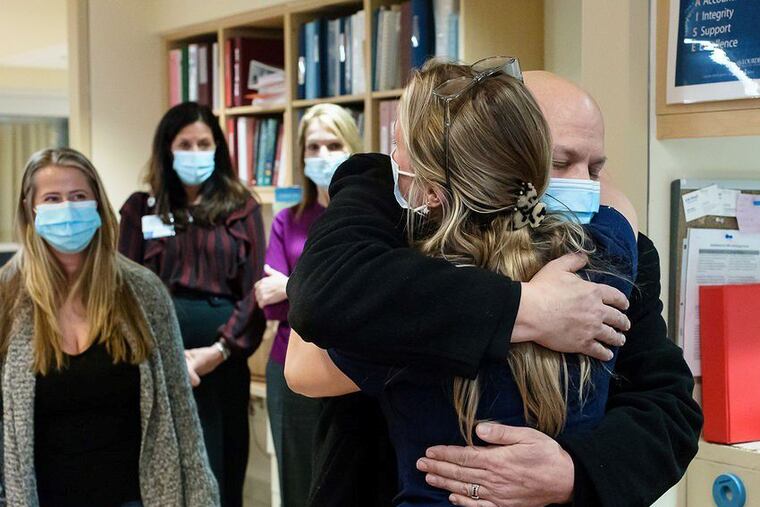A foot-long blood clot — as thick as a finger — was removed from this N.J. police officer
The pulmonary embolism, caused by the coronavirus, was “one of the largest” the staff at Virtua Our Lady of Lourdes Hospital in Camden had seen.

A Merchantville police officer recovering from COVID-19 nearly lost his life earlier this year after a foot-long blood clot — as thick as a finger in some places — formed in his lungs.
The pulmonary embolism, caused by the coronavirus, was “one of the largest” the staff at Virtua Our Lady of Lourdes Hospital in Camden had seen. Pulmonary embolisms, which vary in size, are blood clots that form in a blood vessel and then travel to an artery in the lungs, blocking blood flow.
“It almost took me out,” Frank Talarico Jr., the 47-year-old police sergeant who lives in Pennsauken, said in a press release from Virtua Health.
» READ MORE: What are the warning signs of pulmonary embolism, and how is it treated?
Talarico, who is not vaccinated against COVID-19, contracted the virus in December and spent 26 days at Virtua in Camden, where he was treated for COVID-related pneumonia. After he was released from the hospital, his health had been improving at home with the use of an oxygen tank — until he woke up one morning in January “with severe breathlessness.” Talarico’s wife, a physician assistant at Virtua, “immediately suspected a pulmonary embolism,” according to the hospital.
Doctors say Talarico’s chances of survival were slim. His heart rate fell, he almost went into cardiac arrest, and he was placed on ECMO to support his heart and lungs. His kidneys were also failing, so he was placed on dialysis. Doctors performed a thrombectomy to remove the blood clot with a catheter.
“I’m lucky to be alive,” Talarico said. “COVID and the blood clot caused my body to go into so much distress. They were very concerned I wasn’t going to make it.”
The experience also changed Talarico’s mind about COVID vaccines. He said that as soon as doctors sign off, he’ll be getting vaccinated.
“I had reservations about the vaccine, but after this whole ordeal, my mind is completely changed,” he said.